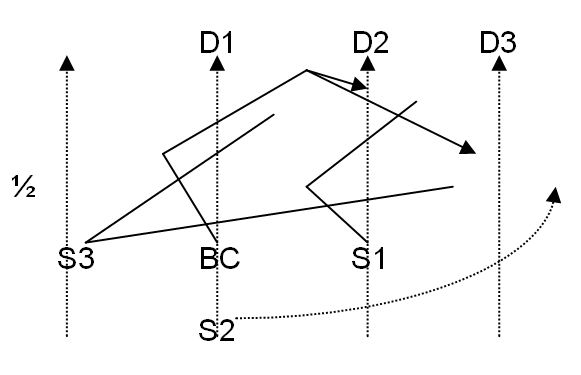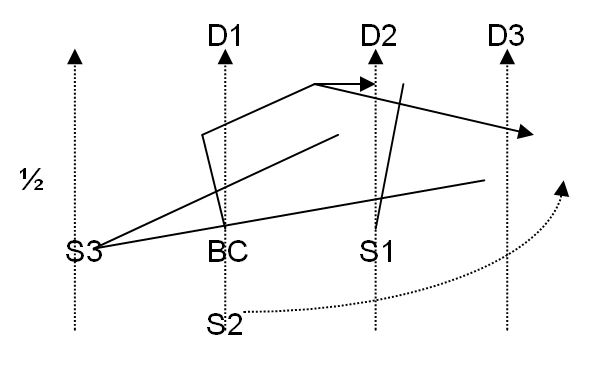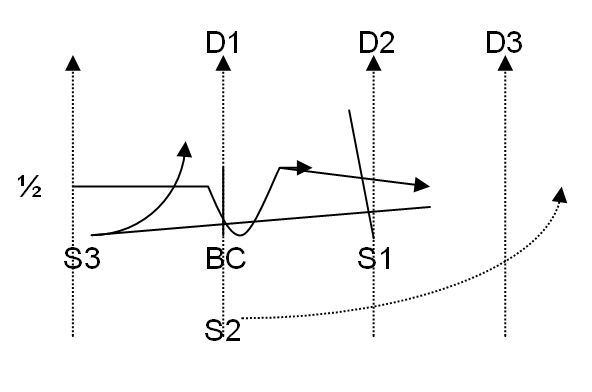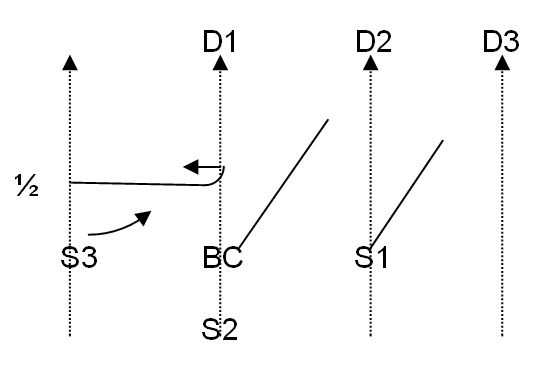- Rugby Toolbox
- Resources & Education
- Learn more
- Articles
- Snook on Coaching
- Establishing Patterns from the Ruck
- Ruck & Run Drill
- Playing Philosophy – Ruck & Run Coaching Components
- Playing Philosophy – Spread the Forwards
- Playing Philosophy – A forward behind the ruck
- Playing Philosophy – Ruck & Run
- Playing Philosophy – An idea!
- The Breakdown
- Building Positivity [3]
- Building Positivity [2]
- Building Positivity
- Fitness and Game Related Activities
- Getting the Head Working
- Missiles are Dangerous
- Use of Video
- Winger Attacking Outside First-Five
- Player Profiling
- Selection
- Fitness Away from the Team Session
- Playing Philosophy (Pre season Prep)
- Coaching the Coaches
- The Rugby Coordinator and Pre-Season Preparation
- Why Not Use Tap Penalties More Often?
- Why Kick the Ball Down the Middle of the Field?
- Defending the 5 Metre Lineout Drive
- Scoring from the 5 Metre Lineout
- What are the Kicking Team Aiming to Achieve from Halfway Restart
- Should We Practice Scoring Tries?
- Team Culture
- Looking After Your Players
- Coach Survival Tips
- Under 11/13 – Backline Defence
- Under 11/13 – Ruck Defence
- Under 11/13 – Back Attack
- Under 13 – The Counter Attack
- Under 11/13 – The Maul
- Under 11/13 – Lineouts
- Under 11/13 – Decision Making
- Under 11/13 – Support Play
- Under 11/13 – Dive Pass and More
- Under 11/13 – Drop & Grubber Kick /Highball Catch
- Under 11/13 – Front on Tackling
- Under 11/13 – Contact – Getting Up – The Ruck
- Under 11/13 – The Coaching Session
- Under 8/10 – Using Space
- Under 8/10 – Kicking
- Under 8/10 – Contact and Picking Up the Ball
- U8/U10 Draw & Pass and Sidestep
- Under 8/10 – The Tackle
- Under 8/10 – The Coaching Session
- Under 7 – Test Your Coaching – Support Play
- Tap Pass and Swerve U7
- Ball Familiarisation; Passing & Receiving
- Activities for the Non-Contact Tackle
- Under 7 – The Coaching Session
- Coaching Teenagers – After the Ruck
- Coaching Teenagers – The Practice Session
- Coaching Teenagers – Best Practice
- Coaching Kids – Best Practice
- Plays from a Tap Penalty
- Running Plays from a 5 Man Lineout
- Driving Plays from a 5 Man Lineout
- Strike Plays at the End of the Lineout
- Back Strike Plays at the Lineout
- Wide Strike at the Scrum (2)
- Wide Strike at the Scrum
- Midfield Attack at the Scrum
- No 8 Plays at the Scrum (2)
- No 8 Plays at the Scrum
- The Cut Out Pass
- Skills to Penetrate (2)
- Skills to Penetrate
- Movements to Penetrate
- Patterns to Penetrate
- Contact and Continuity
- Keeping the Ball Alive Out Wide
- Pre Season Support Activities
- Checklist
- Understanding the game
- The Playing Philosophy
- The Lineout
- Overview
- Team Profile
- Start Now!
- Backrow
- Nine and Ten
- Rugby-related Fitness Activities
- The Psychological Edge
- Open Field Play
- Key Performance Indicators
- Improving Team Performance
- Backline Attack Concepts
- Tactics at Phase Play
- Playing Philosophy
- The ‘Stop Focus’
- Kick Attack
- Clearing the 22
- Wide Attack at Phase
- Player Focus
- Scrum Preparation
- Lineout Preparation
- Back Attack Preparation
- Sevens Preparation
- Sevens Kick Offs
- Sevens Scrum and Lineout
- Sevens Attack Patterns
- Sevens Defence
- 7's Selection and Game Planning
- Coaching and Leadership
- How the Game Evolves
- Changing Within the Game
- Learning from the Television.
- Using Tap Penalties Wisely
- Defence Drills
- Defence Drills for Tight Five
- Team Defence and TUB’ing
- Establishing Patterns from the Ruck
- Structured Phase Play
- Structuring Phase Play on the Run
- Coaching Roles
- Structuring a Close in Tackling/Defensive Session
- Coaching in Threes
- Attacking Back Play
- Kick Off Chase
- Wrap Around Back Plays
- Lineout Plans
- Looking and Learning
- Motivating Your Players
- Scrum Attack
- Refocusing the Team
- Monitoring the Progress
- Learning the Game
- Playing to the Laws
- Small is OK
- Decisions After the Tackle
- Improving Your Coaching
- Food for Thought
- More Food for Thought
- Passing & Catching
- How Ireland Nearly Beat the All Blacks
- The Progressive Coach
- Try Something New
- Encouraging Excitement
- The Mental Approach
- Where to Start
- Being the Best You Can Be
- Off the Ball Decisions
- Lineouts Difficult to Master
- Decisions on the Run
- Rucking and Rolling
- A Successful Approach
- Gaining Clarity
- Manipulation vs Physicality
- Beating the Drift
- To Ruck or Not to Ruck
- Stopping the Lineout Drive
- Fine Tuning the Planning
- It's a Running Game
- RugbySmart 2015
- Using the Shoulders
- Loosehead Prop / Tighthead Prop
- Position Specific – Hooker
- Position Specific – Lock
- Position Specific – Blindside Flanker
- Position Specific – Openside Flanker
- Position Specific – No 8
- Position Specific – Halfback
- Position Specific – First Five Eighth
- Position Specific – Second Five Eighth
- Position Specific – Centre Three-quarter
- Position Specific – Wing
- Position Specific – Fullback
Establishing Patterns from the Ruck

Establishing Patterns from the Ruck.
Nowadays with defences being very well organized and creating huge amounts of pressure on the attacking team at ruck time it is noticeable that at the highest levels many teams are making long, flat passes from the halfback to a forward quite a distance away so as to take out the close in tacklers and begin the next phase from there. Like most things the opposition will soon pick up on this and isolate the ball carrier which will no doubt see the attacking side revert to close in hits with a player latching on the ball carrier to drive him through and beyond the first tackler or alternately the ball carrier offloading at the tackle to another bursting forward. With a little imagination there can be patterns devised that will out manouvre the defenders and put the attackers on the strong foot before the tackle takes place. The following are some old ideas used by Eddie Jones’ Brumbies in the early 2000’s. Of course they will take a lot of practice in pressure situations before they will work.
Based on a few of these concepts your team could also make up some of their own patterns that take the predictability out of the attack and make life just a little more anxious for the defence. Don’t forget to experiment with the offload at the tackle as an alternative to just setting the ruck. If teams keep playing as they are at the moment then the game will become a boring spectacle indeed.
Set up of the Pattern
One player in pocket behind 9; another player in pocket behind 10.(Or first receiver/BC)

• ½ to Ball Carrier (BC) – BC to Support player 1 (S1) – Support player 3 (S3) support inside BC – S2 support outside or inside S1 – plus variation of support lines.
• Get depth correct for S3, S2.
“A” Pattern

(i) BC receives pass and heads back toward direction of pass; at same time S1 heads in opposite direction in effect splitting apart.
(ii) Simultaneously they both converge and BC passes a short ball to S1 or passes behind to S2.
S2 supports wide and deep.
S3 supports in closest channel keeping defenders in close.
“B” Pattern

BC receives pass and simultaneously BC and S1 head in the direction of where the pass came from, attempting to move the defence in that direction.
Together both players change direction and pace and attempt to beat defenders on the outside. BC should head to D2.
S3 can support as a decoy in the closest channel.
S2 can decoy against D1 or go really wide and deep.
“C” Pattern

BC attempts to engage both D1 and D2 by aggressively stepping off the inside foot and heading towards D2. At the same time S1 attacks the outside shoulder of D2 and S2 receives the ball on the outside shoulder of D3 before straightening hard.
Or BC can pass to S1 on the inside or outside shoulder of D2 S3 needs to be the first support player for a pass or at the tackle.
“D” Pattern

9 runs and decoys in to S3. He passes to BC on the run and wraps BC. BC passes back to 9 who produces a short ball to S1 or a wider ball to S2 who has run wide and straightened up outside D3.
The spacing will need to be wider on this play particularly between 9 and BC.
“E” Pattern

9 runs laterally across the face of the defence as if to pass to BC (wide) or behind BC to 10. He then passes back inside to S3 who has started in the blind spot behind the ruck. S2 should run close to 9 on his outside to hold the defence with BC running laterally with 9.
These are but a few ideas. Practice a couple of them as often as possible and find the ones that work for you. Quick ruck ball will not require anything too intricate but these concepts will be useful when slower ball is delivered.
Start in channels marked out by cones but as quickly as possible introduce the defenders.